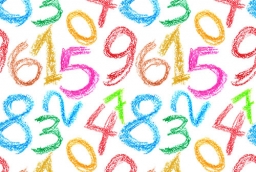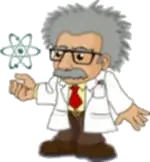Two-digit number
In a two-digit number, the number of tens is three greater than the number of units. If we multiply the original number by a number written in the same digits but in reverse order, we get product 3 478. Find the original number.
Final Answer:

Tips for related online calculators
Do you have a linear equation or system of equations and are looking for its solution? Or do you have a quadratic equation?
Do you solve Diofant problems and are looking for a calculator of Diofant integer equations?
Do you solve Diofant problems and are looking for a calculator of Diofant integer equations?
You need to know the following knowledge to solve this word math problem:
algebraarithmeticbasic operations and conceptsnumbersGrade of the word problem
Related math problems and questions:
- Determine 25341
 In a two-digit number, the number of tens is three more than the number of ones. If we multiply the original number by a number written with the same digits but in the reverse order, we get the product 3 478. Determine the actual number.
In a two-digit number, the number of tens is three more than the number of ones. If we multiply the original number by a number written with the same digits but in the reverse order, we get the product 3 478. Determine the actual number. - Three-digit - sum
 A three-digit number has a digit sum of 16. If we change the digits in the hundreds and tens places in this number, the number is reduced by 360. If we swap the ten's and one's digits in the original number, the number increases by 54. Find this three-dig
A three-digit number has a digit sum of 16. If we change the digits in the hundreds and tens places in this number, the number is reduced by 360. If we swap the ten's and one's digits in the original number, the number increases by 54. Find this three-dig - Four-digit - sum
 A four-digit number has a digit sum of 20. The sum of its last two digits is equal to the second digit increased by 5. The sum of the outer digits is equal to the second digit decreased by 3. If we write the digits of this number in reverse order, the num
A four-digit number has a digit sum of 20. The sum of its last two digits is equal to the second digit increased by 5. The sum of the outer digits is equal to the second digit decreased by 3. If we write the digits of this number in reverse order, the num - Equations 5445
 The digit sum of a two-digit number is 8. If we change the order of the digits, we get a number 18 smaller than the original. Identify these numbers. We are using linear equations of two unknowns.
The digit sum of a two-digit number is 8. If we change the order of the digits, we get a number 18 smaller than the original. Identify these numbers. We are using linear equations of two unknowns. - Repeatition not allowed
 How many four-digit numbers can be formed from the numbers 3 5 8 9 if they are not allowed to be repeated?
How many four-digit numbers can be formed from the numbers 3 5 8 9 if they are not allowed to be repeated? - Three-digit number
 Find all three-digit numbers n with three different non-zero digits divisible by the sum of all three two-digit numbers we get when we delete one digit in the original number.
Find all three-digit numbers n with three different non-zero digits divisible by the sum of all three two-digit numbers we get when we delete one digit in the original number. - A number 7
 A number is such that if we multiply it by 3/5 and add 4/7 to the product, we get -2/35. Find the number.
A number is such that if we multiply it by 3/5 and add 4/7 to the product, we get -2/35. Find the number.
